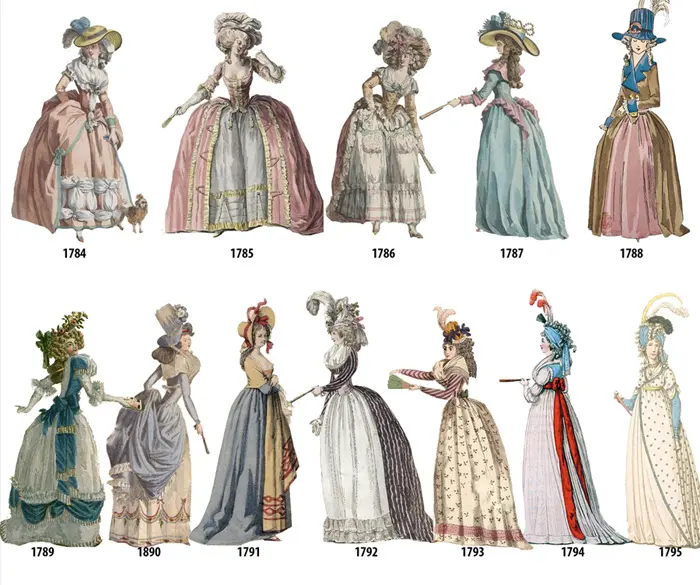Women’s fashion has a long and colorful history that the change and influence it has seen over the last 200 years has been exponential. Year after year, new trends are being introduced and it’s possible to see how it changes according to the current social, political attitudes, pop culture, and influential style icons of the time. But when did this in-demand industry start evolving? And how has it changed over time?
To document the evolution of women’s fashion through history, journals and magazines have begun making fashion plates depicting women dressed in the current styles and trends of each given time. These images, which were either engraved or printed, first circulated at the end of 18th century in England. Today, you can find various compilations of digitized fashion plates on the internet starting from 1784 to 1970. The timelime clearly presents the many shifts and resurgences of styles over the course of almost 200 years.
The Evolution of Women’s Fashion From Years 1784 – 1970

During the earlier times, women’s fashion was more of a cultural thing than a personal style. It was only from the 1770s that the industry became a mainstream thing. So, it’s safe to assume that the evolution of fashionable apparel started from there. During the late 18th century, the style of Marie Antoinette, Queen of France heavily influenced fashion at the time.
In 1784, feminine gowns that incorporated frills, ruffles, and lace with corset bodices leading to floor-length hoop skirts were the trend. And for the first time in history, a style icon was able to elevate fashion from a trade to an art form.

Furthermore, textile manufacturing flourished in Britain and the invention of the sewing machine led to the massive growth in fashion industry. By the end of the 18th century, women’s fashion became a little less structured to allow more fluid movement. During the early 19th century, empire dresses with empire waists and cap sleeves were all the rage. And in the early 1800s, frilly full skirts and off-the-shoulder sleeves made a comeback.

Entering the Victorian era in the 1890s, fashion was designed for the conservative women featuring high necks and long sleeves. During this time, corsets were considered obsolete and styles gave a stronger emphasis on women’s slim waist. In 1910s, women’s clothing were looser in design and hemlines began to raise up past the ankle level.
The fashion industry saw a big change in 1920 when sleeveless gowns were introduced and dresses were cut off right below the knee. Starting from 1940, structured suit dresses with structured shoulders, belted waists, and A-line skirts were the trend.



Mini-skirts became popular in 1965 which was then followed by unisex clothes in 1970 when pants for women made their grand debut in the fashion world. The last known fashion plate was recorded in 1970 because fashion illustration has been replaced by photography in the succeeding years.


Source: Imgur

